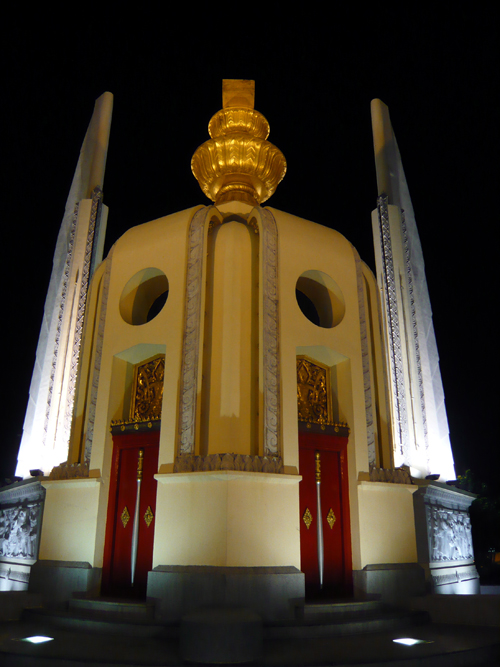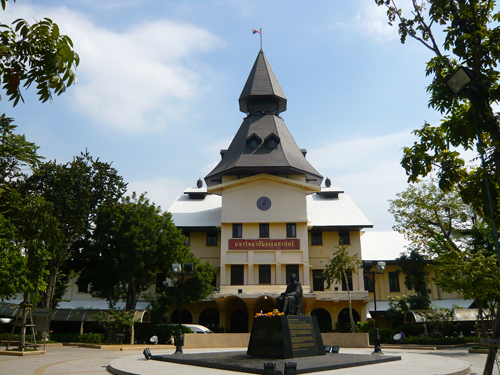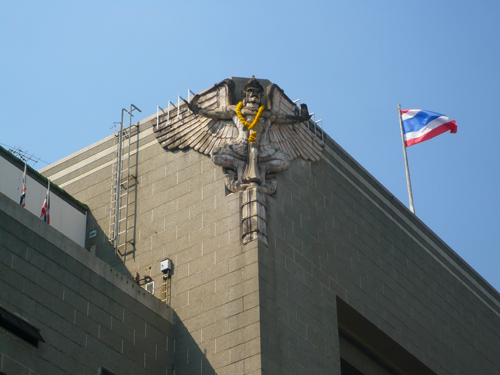-
Membership
Membership
Anyone with an interest in the history of the built environment is welcome to join the Society of Architectural Historians -
Conferences
Conferences
SAH Annual International Conferences bring members together for scholarly exchange and networking -
Publications
Publications
Through print and digital publications, SAH documents the history of the built environment and disseminates scholarship -
Programs
Programs
SAH promotes meaningful engagement with the history of the built environment through its programs -
Jobs & Opportunities
Jobs & Opportunities
SAH provides resources, fellowships, and grants to help further your career and professional life -
Support
Support
We invite you to support the educational mission of SAH by making a gift, becoming a member, or volunteering -
About
About
SAH promotes the study, interpretation, and conservation of the built environment worldwide for the benefit of all
Building Siam: The People’s Party and Modern Architecture in Thailand
Lawrence Chua documented the architecture of the People's Party in Thailand.
Aug 17, 2012
by
Lawrence Chua
Lawrence Chua, Postdoctoral Fellow in Asian Studies at Hamilton College
The sites photographed in this collection of images represent a period in which Southeast Asian architecture sought to reconcile the global currents of modernism with the local political assertions of nationalism. In 1932, a coalition of military and civilian elites overthrew the absolute power of the Siamese monarchy.[1] The Khana Ratsadon คณะราษฎร or People’s Party, as the revolutionary party called themselves, undertook the transformation of the country into a modern democratic nation-state and prioritized purging Thai architecture of its royalist symbolism and hierarchical spatial organization.[2]
While it did not develop in a vacuum, the architecture of the People’s Party did not participate in a conversation with European modern architecture as either an equal partner or as a slavish admirer. Despite its political and aesthetic relationships with the École des Beaux-Arts in Paris (some of its architects, like Mom Luang Samaichaloem Kridakon, studied there), Italian colonial architecture (many of its architects, like Phra Phrombhichitr, apprenticed under Italian architects working in Bangkok and one of the chief artists of the period, Silpa Bhirasri, began life as Corrado Feroci in Firenze), and European fascism (People’s Party pundits like Luang Wichit Wathakan lionized Mussolini), the architecture of the People’s Party betrays a more complex history than a narrative of imitation allows. The architecture of the People’s Party eschewed the fussy timber and plaster architecture of Siam’s absolutist past in favor of simple geometric forms, flat roofs, and steel-frame concrete construction. But the political and economic conditions that supported these changes were not the same as in Europe and the United States. Most obviously, Siam did not experience the industrial revolution or the emergence of an independent bourgeoisie during the same period as Europe. It was not able to produce the steel and glass integral to the emergence of modernist architecture in Central Europe. Its use of concrete was intimately tied to the monarchy’s economic investments in the early part of the 20th century, when King Rama VI established a monopoly on its production through the founding of the Siam Cement Company.[3] In many ways, the architects of the People’s Party built on innovations that were already taking place in Siamese architecture under the reign of the absolute monarchy.

This collection includes public buildings like the Central Post Office (Bangkok, 1940, architects, Miw Jitrasen Aphaiwong and Phrasarot Ratnanimman), religious buildings like Wat Phra Sri Mahathat (originally named “Wat Prachatipatai” or “Democracy Temple”)(Bang Khen, 1940: architect, Phra Phrombhichitr), cinemas like the Rong Phapayon Tahan Bok (“Infantry soldier’s cinema,” Lopburi, 1940), and monuments like Victory Monument (Bangkok, 1942, architect: Mom Luang Pum Malakun). The collection also includes comparative images from earlier periods and neighboring countries, such as Wat Benjamabhopit (Bangkok, 1915, architect: Prince Narisara Nuvadtivongse), concrete construction undertaken in post-Independence Phnom Penh, Cambodia, and colonial-era buildings erected in early 20th-century Penang, Malaysia. Photography was hampered by the flooding that inundated large areas of Thailand in 2011. At some sites, sandbag barricades necessitated later trips to photograph the facades properly. The sites have been photographed with an eye to showing how their designs were responsive not only to political realities but to changes in building materials and techniques. For instance, ornamental forms that can be seen on the facades of the National Stadium (Bangkok, 1939, architect: Miw Jitrasen Aphaiwong) are attempts to re-define literary figures like Indra riding the four-headed elephant Erawan, typically depicted as effete denizens of the royal court, in the exaggerated musculature of idealized workers.

Those seeking exotic additions to the canon of architectural history may be disappointed by the images in this collection. There is no way to deny that most of the architecture built in Siam and Thailand during this period appears clumsy, flimsily built, and imitative of more accomplished buildings that have entered into the canon of architectural history. But it is precisely these imperfect qualities that are valuable to a study of modern architecture. The architecture of the People’s Party can be seen as part of contemporary global building programs that sought to reconcile the promises of modernity with the ambitions of nationalist regimes in places as diverse as Albert Speer’s Berlin, Benito Mussolini’s Rome, and Kamal Atatürk’s Ankara. Their often banal qualities allow us to see beyond the pleasurable facades of a triumphant modernity and consider how unequal power relations and access to materials, technology, and labor have shaped architectural modernity.
The reign of the People’s Party ended in 1957 when a coup d’etat installed a pro-royalist military government that sought an architecture that reinvigorated historicist idioms associated with the monarchy. Today the architecture of the People’s Party is rapidly being erased from the Thai landscape, even as its remaining edifices continue to be rallying sites for new political movements seeking social justice and the elusive promises of modernity.[4]
[1] Siam became the official name of the country after King Mongkut ratified a treaty with Great Britain on April 5, 1856. Siam later became Thailand in 1939. Thailand Official Yearbook 1964 (Bangkok: Government Printing House, 1964), p. 10.
[2] Chatri Prakitnonthakan, The Art and Architecture of the People’s Party: Political Symbols in Ideological Aspect, [Sinlapa-sathapattayakam khana ratsadon: sanyalak thang kanmueang nai choeng udomkan], Bangkok: Matichon, 2009. Pp. viii, 230; figs., notes, bib. In Thai., p. 6; 124.
[3] National Archives of Thailand, Rama 6, รล/Office of the Royal Secretariat, 20/13, “Letter of Chaophraya Yomarat to King Rama VI.”
[4] Democracy Monument and Victory Monument were important rallying sites during the 2009 and 2010 anti-government demonstrations. Other monuments built during the tenure of the People’s Party, such as the Laksi monument, have faced destruction by indifferent officials.”Mai son klum anurak tan rue anusawari!” [Not interested in the preservationist group opposing the destruction of the monument!], Thansettakit newspaper, 25 June 2010.


